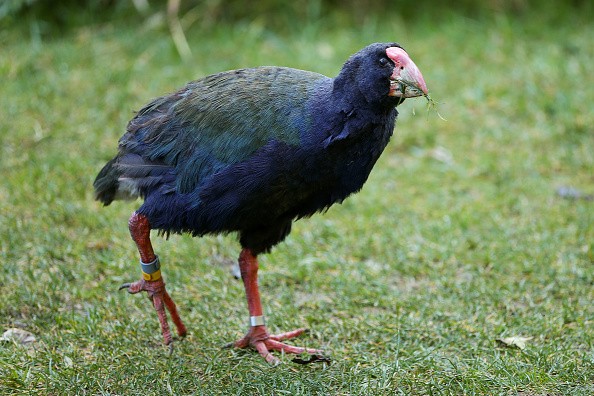New Zealand is home to many unique and endangered birds, but none more so than the takahē, a large, flightless, and brightly colored bird that was once thought to be extinct.
The takahē is a conservation icon and a survivor, and its recent return to the wild in some parts of the country marks a significant achievement for wildlife protection efforts.
What is a takahē?

The takahē (Porphyrio hochstetteri) is the largest living member of the rail family, a group of small to medium-sized ground-dwelling birds with short wings, large feet, and long toes.
The takahē is often known by the abbreviated name takahē, which it shares with the recently extinct North Island takahē (Porphyrio mantelli).
The two takahē species are also known as notornis, meaning southern bird in Greek.
The takahē has a stout red beak and legs, and a dark royal blue head, neck, and breast. Its shoulders are peacock blue, and its wings and back are iridescent turquoise and olive green.
It stands about 50 cm tall and weighs between 2.3 and 3.8 kg. It has wings, but only uses them for display during courtship or as a show of aggression.
The takahē is native to New Zealand and has a special cultural, spiritual, and traditional significance to Ngāi Tahu, the iwi (Māori tribe) of most of the South Island.
Ngāi Tahu value takahē as a taonga (treasure) and they continue to act as kaitiaki (guardians) of the takahē by working with the Department of Conservation (DOC) to protect this precious species.
Also Read: 5 Extinct Species That Strangely Came Back to Life
How did the takahē survive?
The takahē was first discovered by Europeans in 1849, when a group of sealers captured a living bird in Tamatea/Dusky Sound, Fiordland.
The bird was sent to Gideon Mantell, a paleontologist who realized that this was Notornis, a living bird known only from fossil bones. The bird was formally described in 1850 by his son Walter Mantell.
The takahē once roamed across the South Island, but pressures from hunting, introduced predators, habitat destruction, and competition for food led to their decline.
After another bird was captured in 1898, and no more were to be found, the species was presumed extinct.
In 1948, after a carefully planned search, the takahē was dramatically rediscovered by Geoffrey Orbell in an isolated valley in the South Island's Murchison Mountains.
The species was then managed by DOC, whose Takahē Recovery Programme maintains populations on several offshore islands as well as Takahē Valley.
It has now been reintroduced to a second mainland site in Kahurangi National Park.
Although the takahē is still a threatened species, its conservation status was downgraded in 2016 from Nationally Critical to Nationally Vulnerable. The population is now at 440 (as of October 2021) and is growing by 10 percent per year.
The takahē is a sedentary and territorial bird that inhabits native grasslands in alpine areas. It eats mostly the starchy leaf bases of tussock and sedge species, and also tussock seeds when available.
If snow cover is heavy, it will move to the forest and feed mainly on underground rhizomes of the summer green fern.
The takahē breeds once a year, raising one or two chicks. The pairs are monogamous and highly nurturing parents, who take turns incubating the eggs and caring for the chicks until they are ready to fledge.
The families need a lot of space, with territories ranging between 4 and 100 ha, depending on the availability and quality of their food.
Related Article: Island Birds Are Losing The Ability To Fly
© 2024 NatureWorldNews.com All rights reserved. Do not reproduce without permission.




![Roundworms with Short Memories 'Stop Forgetting' When Frozen or Given Lithium [Study]](https://1471793142.rsc.cdn77.org/data/thumbs/full/70295/280/157/50/40/roundworms-with-short-memories-stop-forgetting-when-frozen-or-given-lithium-study.jpg)
